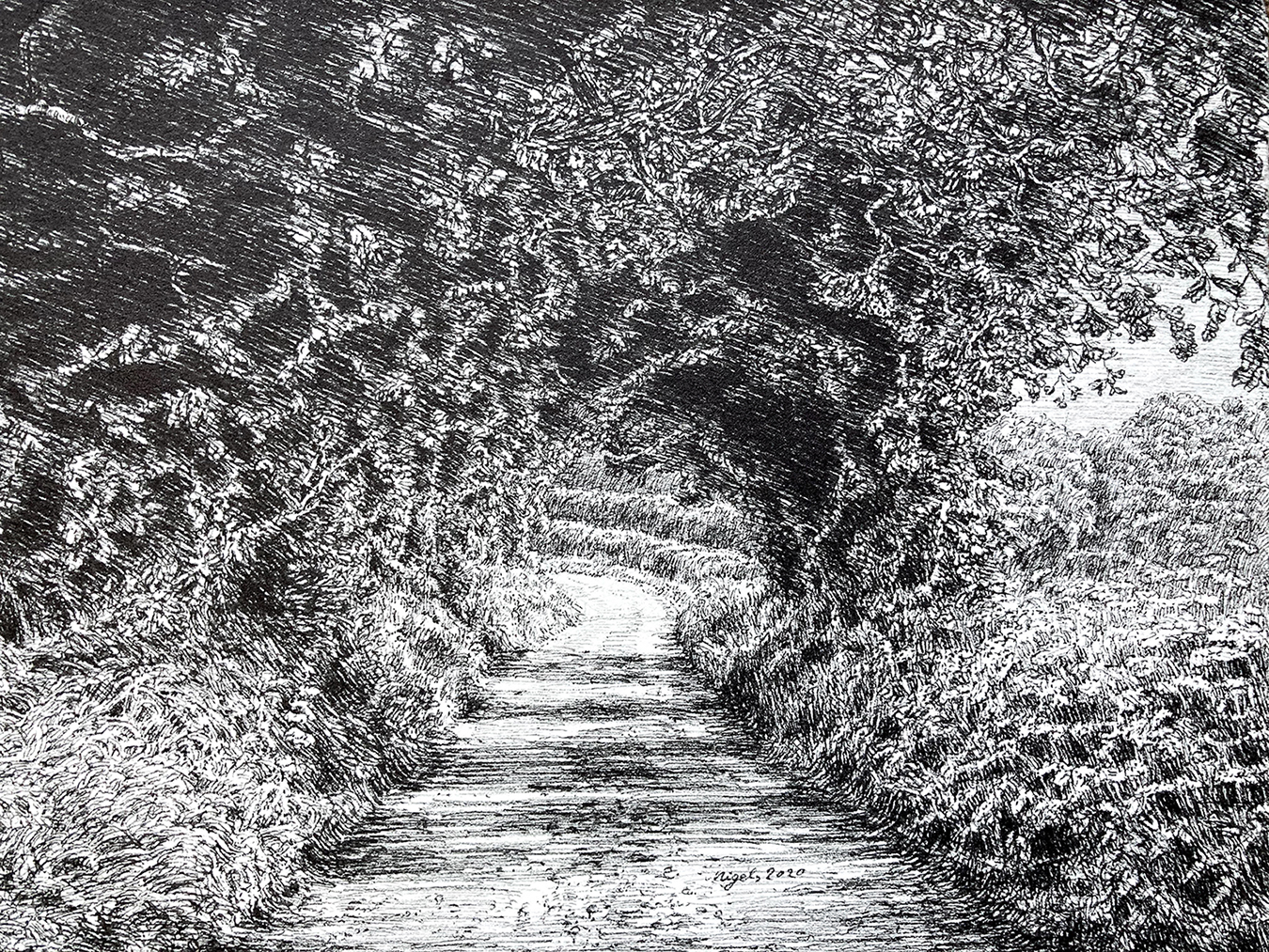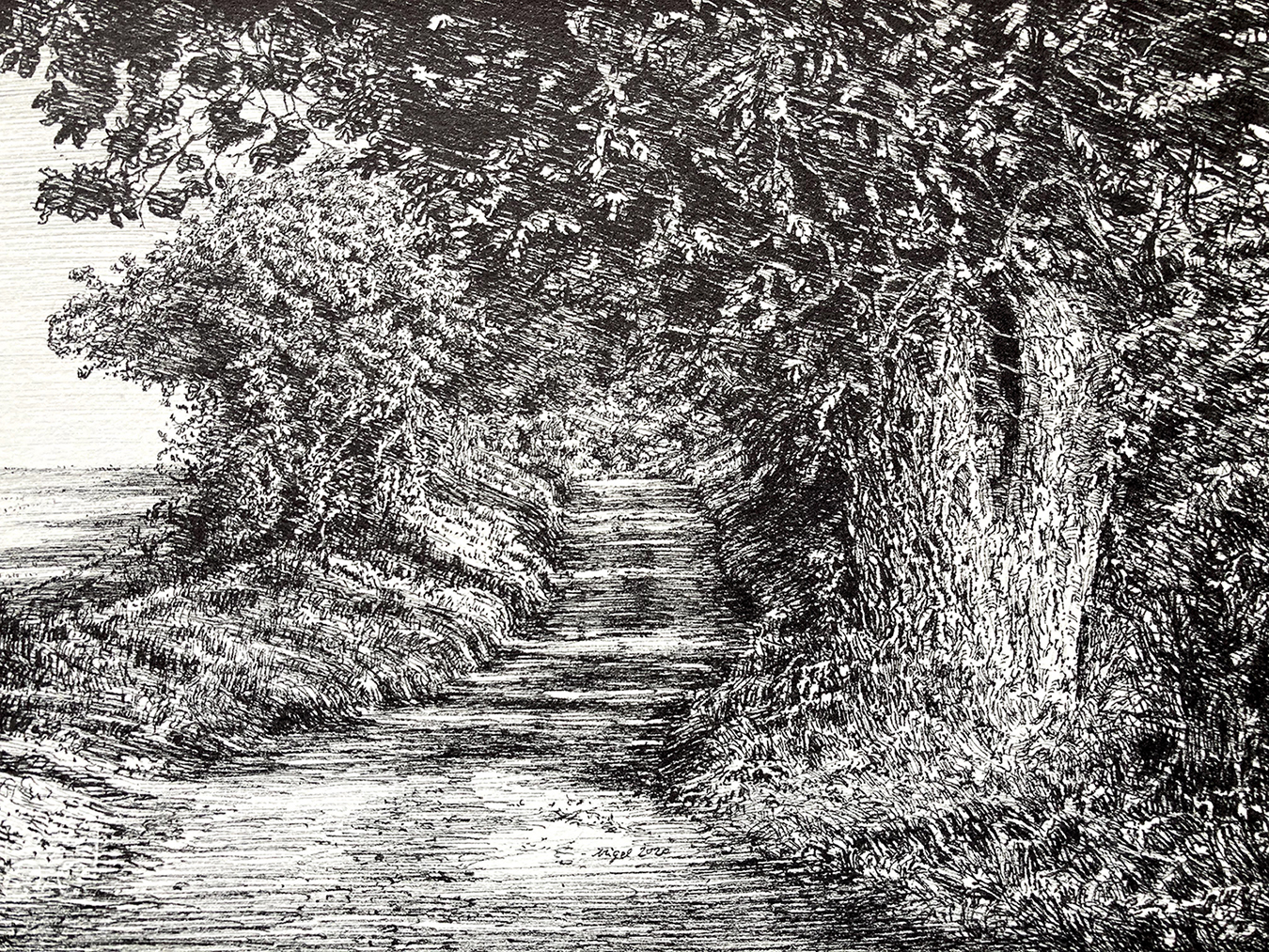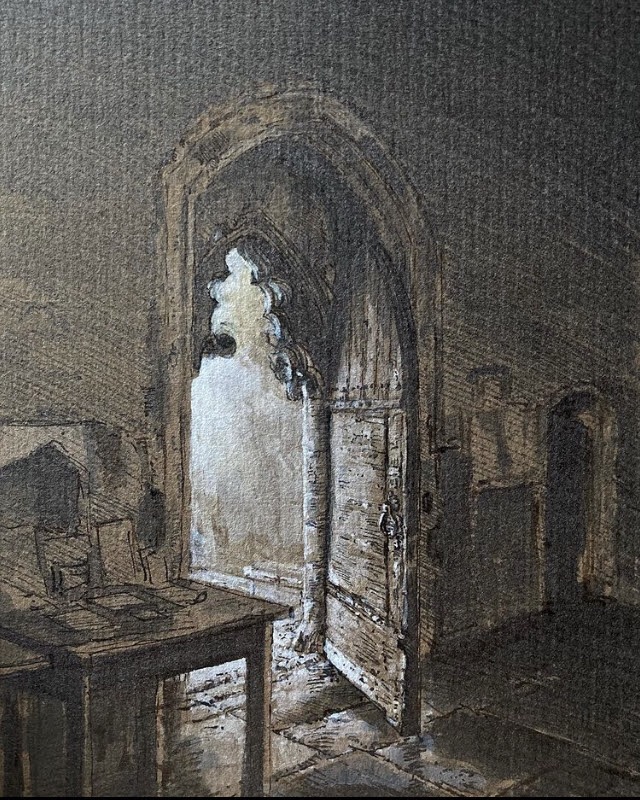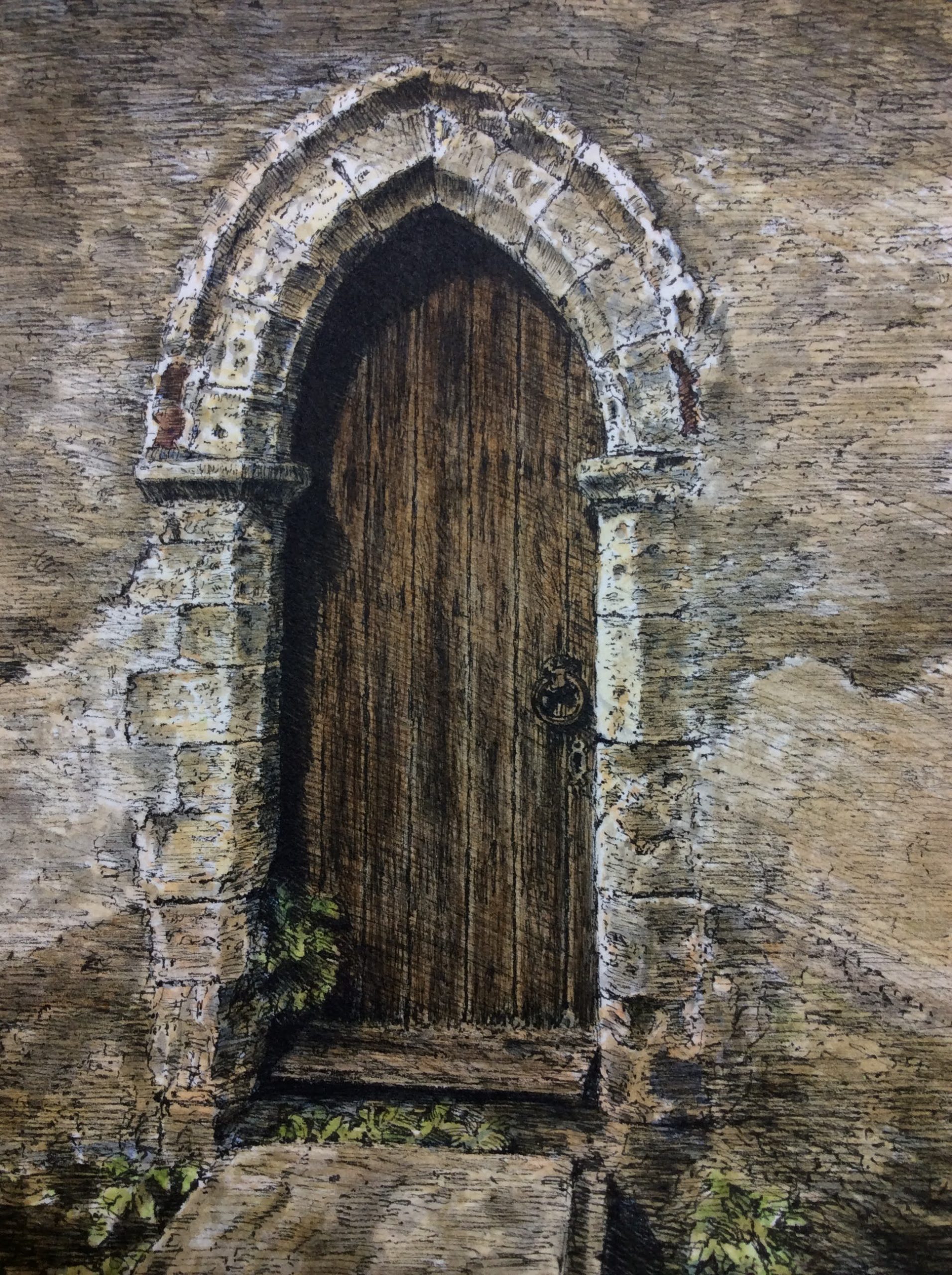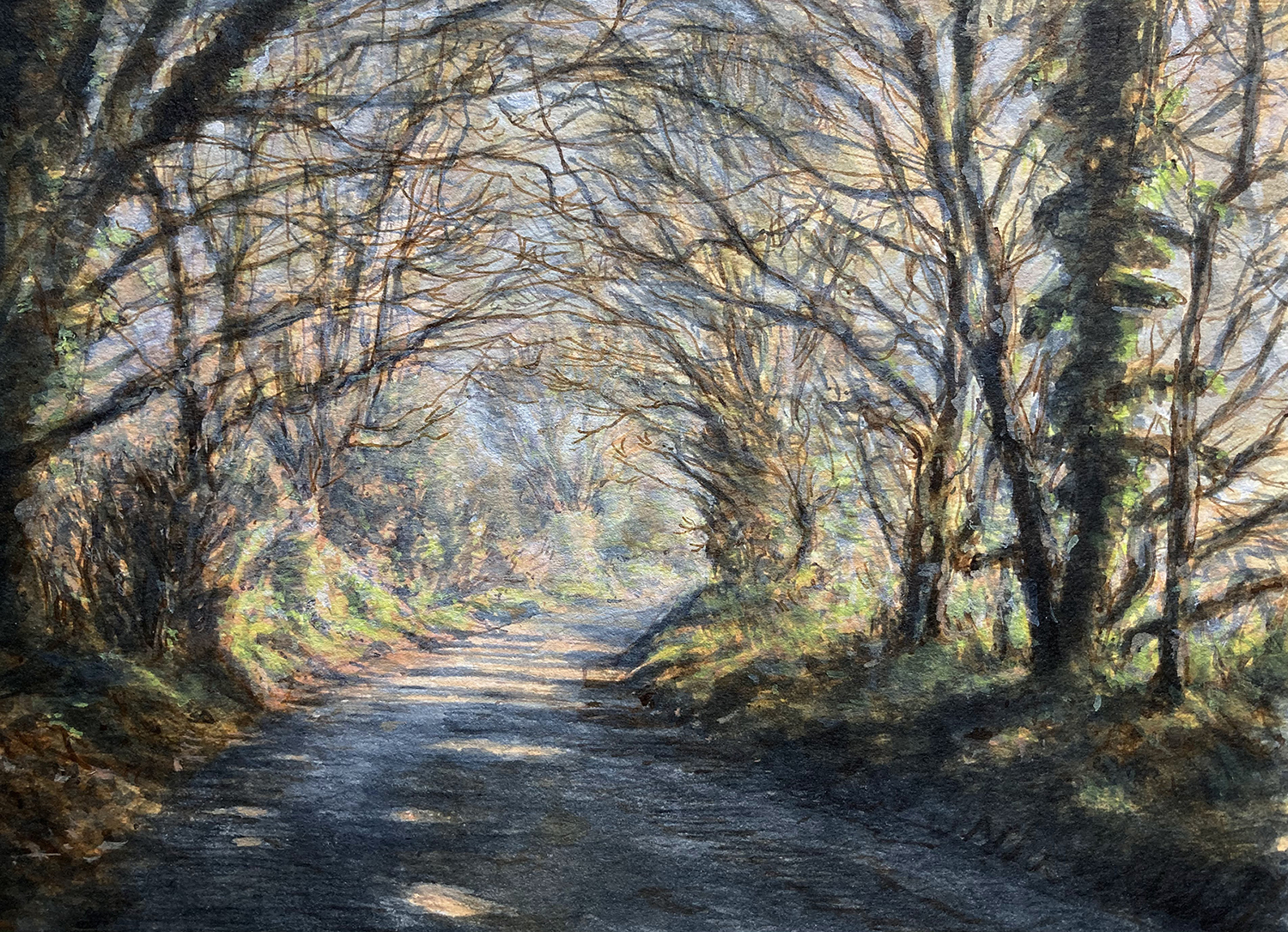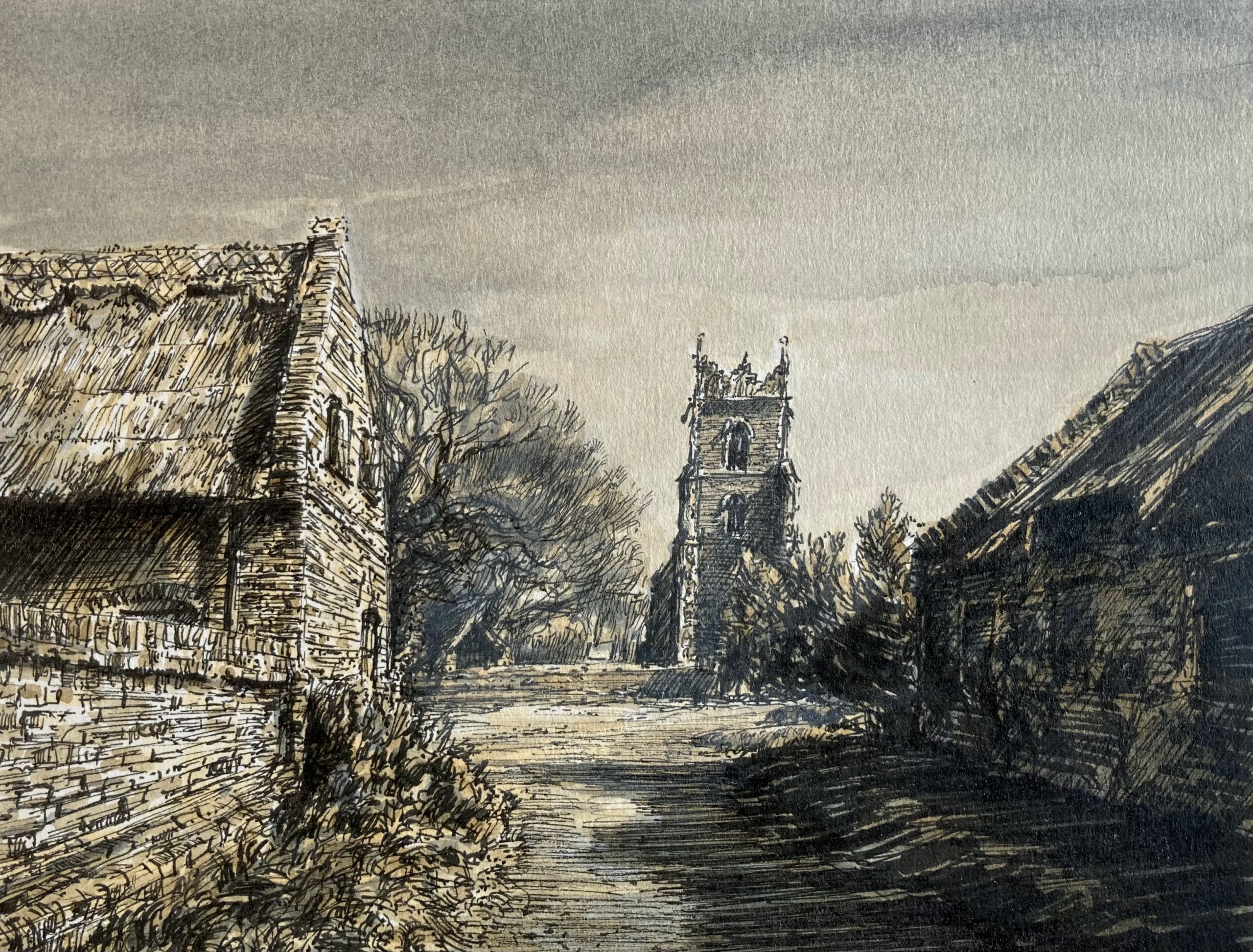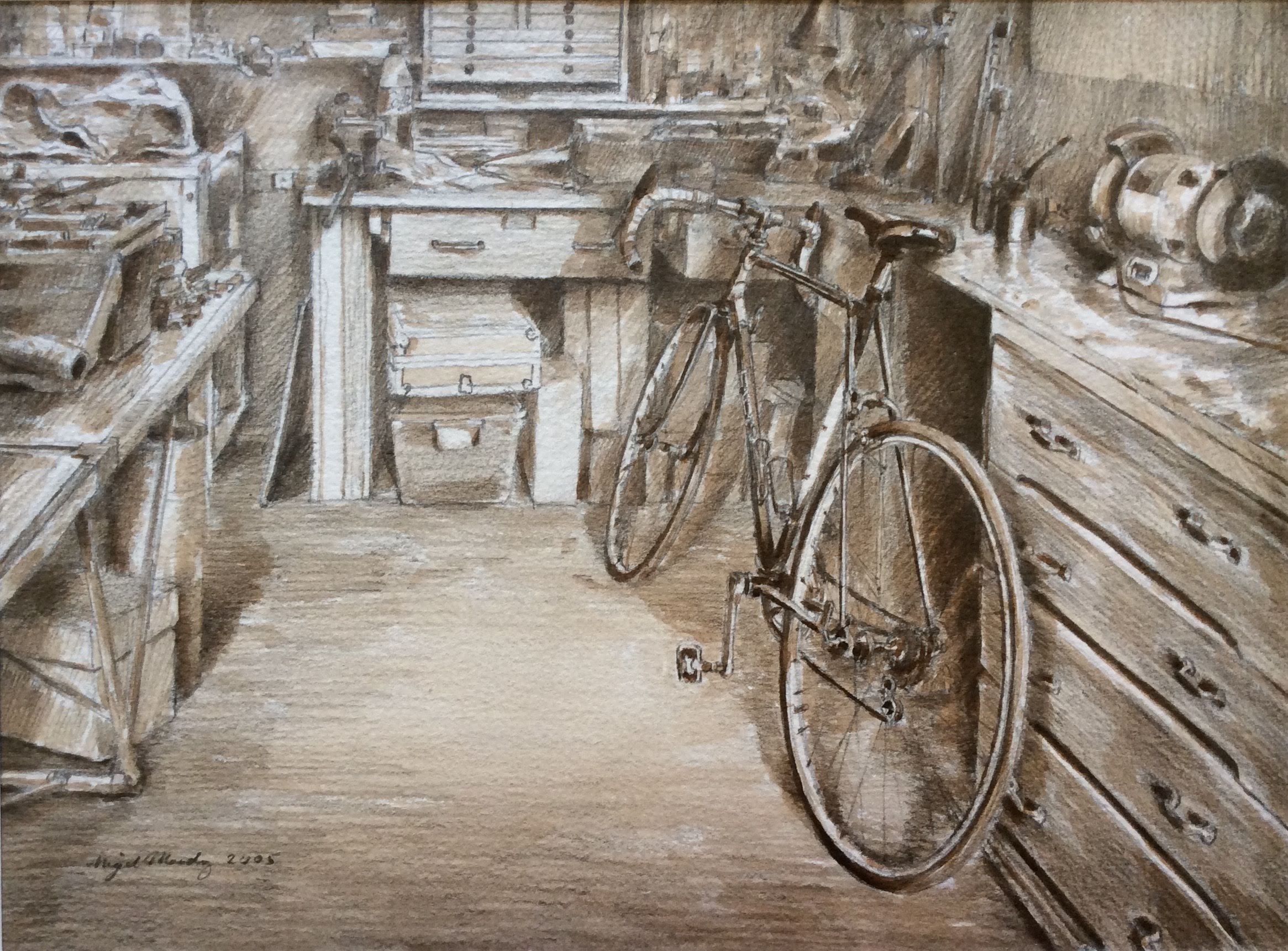Nigel Moody was born in Surrey in 1961 but the family relocated to Norfolk, close to Hickling Broad, when he was just six years old. He spent a lot of his childhood and youth fishing, rowing, sailing and ice-skating on the the Broad, and enjoyed roaming the surrounding countryside, marshes and reedbeds. He left school aged fifteen and began his art education at Great Yarmouth College of Art and Design; then continued with an honours degree in painting at Winchester School of Art. The constant presence in his work, through the years, has been drawing. Media and subjects have varied but landscape and drawing have always remained.
“I was fortunate enough to fail my Eleven-Plus exam and so went to Stalham Secondary Modern School which was very strong in the arts and crafts. The art department was particularly good and it was my favourite subject. I wasn’t much interested in anything else, so against everybody’s advice (including the art teacher) I wanted to study art.
East Anglia has a very strong and ancient heritage of landscape drawing and painting, and I am inspired and encouraged by those gone before me, Constable and J. S. Cotman being among my favourites. Further afield I admire Blake and Palmer. Blake has one of the purest lines you’ll ever see, and Palmer can even find beauty in a lump of moss growing on a thatched roof, and has a wonderful imagination. Even farther afield I love the drawings of Rembrandt and most of the old masters who without exception were all brilliant draughtsmen.
As, I imagine, Elgar picked his tunes out of the ether whilst cycling over the Malvern Hills, I can find inspiration pedalling along the lanes of Norfolk and Suffolk. I don’t have a personal profound philosophy on art, or much to say about it. I started drawing as a young child and it is something I have always done. Subjects have either been things I found beautiful or interesting; or they have been commissions and then the subject is chosen for you. I hope some of my drawings will stand the test of time, which is the true test, and be pleasant to look at two-hundred years from now. If there is anything to be written about them I would rather leave that to the philosophers and art-critics.“
